Shogun Assassin: Limited Edition Steelbook
I suppose I have Quentin Tarantino to thank as, if he hadn't included a scene at the end of Kill Bill Vol. 2 with The Bride sitting with her daughter and watching Shogun Assassin as bedtime viewing, I wouldn't have ever bought or watched Robert Houston's 1980 re-editing of the first two 'Lone Wolf and Cub' films, nor watched the entire six film series.
Based on the popular manga series by Kazuo Koike and Goseki Kojima, the Lone Wolf and Cub films begin with Ogami Ittō, the famous swordsman and official Shogunate Executioner, being framed as a traitor by the Shadow Yagyu Clan. Widowed when his wife is poisoned on the orders of their leader, Yagyū Retsudō, Ittō takes to the road with his young son Daigorō and earns money by offering his services as a ronin assassin, always acting according to the samurai code.
As a big fan of Japanese exploitation cinema, Robert Houston wanted to bring the Lone Wolf and Cub series to the United States but, because Paramount had failed when they tried to release a dubbed version of one of these films, possibly the fifth one (Baby Cart in the Land of Demons, 1973) which failed both critically and commercially, there weren't many distributors demanding further films from Kenji Misumi, who directed all but one of the films. Houston decided to do something very different by taking the first two films, Sword of Vengeance and Baby Cart at the River Styx, which are both directed by Misumi and released in Japan in 1972, and editing them together into one 90 minute film. In order to create some form of coherent narrative, Daigorō provides a voiceover throughout the film despite never speaking in any of the six Japanese movies.
As you would expect from something that combines these two movies, it begins by establishing exactly who Ogami Ittō is and why he has embarked on this journey of slaughter with his son and why he feels so strongly against the Shogun and ends in the desert with Ittō taking on the 'Masters of Death' and an entire army.
There is a realistic bond between Ittō and Daigorō as Tomisaburo Wakayama and Akihiro Tomikawa could easily pass themselves off as father and son, with great chemistry between the two. You also see Daigorō develop as a character and assistant to his father, operating the deadly cart in which he travels, pulling levers to shoot out blades, bring up armour plating and unveil a machine gun at the front! The cart is almost another character and plays a huge role across the series - it isn't just a simple mode of transport.
Wakayama and his brother-in-law Shintaro Katsu have a special place in Japanese cinema with Wakayama famous for his portrayal of the widowed assassin in the Lone Wolf and Cub films and Katsu playing Zatoichi the blind swordsman and Hanzo the Razor. They featured in so many films that show the flipside of Japanese cinema to the more renowned and critically acclaimed works of directors like Yasujiro Ozu and Akira Kurosawa. They are both fantastic actors who, whilst not the greatest thespians alive, have undeniable screen presence and are great at what they do. Wakayama is an artist with a sword and his Judo background (a 4th Dan black belt) gives him a real physicality and lends his movement an almost balletic quality.
I've never been as big a fan of Shogun Assassin as the six films series featuring the same characters as it doesn't go into as much depth of either the main characters nor the political machinations of the Shogun and the Yagyu Clan, who were instrumental in his fall from grace. Watching this again made me realise what a great job Robert Houston did with the subject material and deciding to make these cult films available to as wide an audience as possible. Shogun Assassin is a neatly made and a highly enjoyable piece of Japanese exploitation cinema that manages to work with an English dub. I suppose the bottom line is that Shogun Assassin is great fun to wonder what the filmmaking qualities (or otherwise) are like -- it is a great piece of exploitation cinema that many people love.
The Disc
Extra Features
Unusually for any film, not just a fairly low budget piece of exploitation cinema, there is not one, but two commentaries. The first is an 'expert' commentary with Ric Meyers, a scholar on Asian film and Steve Watson, a martial arts expert and they speak very well for the whole running time with Meyers talking about the film, its place in Asian cinema and the actors whilst Watson concentrates more on Wakayama's swordsmanship, the weapons that people will use and points out if a blade is designed for slashing or stabbing at the various moves that are employed throughout the film.
The second commentary is dubbed the 'production commentary' so you have producer David Weisman, illustrator Jim Evans and Gibran Evans, who provided the voice of Daigorō in the English dub. They all speak very well and provide different insights about the film and how was made from conception to the final credits, with Jim Evans laughing about how bad he thinks they now look. Perhaps the most interesting speaker is Gibran Evans who recounts what he thought about the lines he was given all those years ago when he was a little boy but David Weisman is probably the voice of authority as he knows more about the film that the other two guys it just says it's a shame that Robert Houston wasn't there to talk about the film as well as he could really have shed a great deal of light and spoken at length about the film -- why didn't anyone invite him?
Samuel L Jackson on Shogun Assassin (12:55, HD) is a fairly interesting piece just because Jackson is such a massive fan of Shogun Assassin, the entire Lone Wolf and Cub film collection and even the TV series that he has plenty to add about this film and Asian films in general. He is an extremely enthusiastic and lively speaker so he goes through the questions, answering them all very well and leaves you wanting to watch the film again.
There is also the original trailer and trailers for each of the Lone Wolf and Cub films, all of them in HD.
The Picture
Shogun Assassin is really a terrific visual film designed for the exploitation market and the sort of thing that was shown repeatedly on New York's 42nd Street and, according to Samuel Jackson, it was as part of a triple bill of Asian films that cost the princely sum of one dollar! This part of the great Japanese and Chinese film movement in which blood didn't so much leak out that came out a great spurts as if it was being fired from a hose!
All of the fight scenes are beautifully choreographed and Wakayama is such a great screen presence and terrific martial arts practitioner that you can watch the film over and over again just scanning to the combat scenes and, if you want, watch them in slow motion to see just how well everything is pulled off and Marvel at just how close the blades came to the other actors without doing serious harm.
Presented here in 1080p high-definition with a very high AVC level, the film looks better than I have never seen it -- much better -- with much more definition, brighter colours and better contrast levels. Of course, some of the scenes are a little out of focus or aren't quite shot properly but this is to do with the source material rather than the HD remastering. Also, the daytime scenes are much better presented than those in a lowlight situation when you can see the lack of clarity as this isn't a new film only a few months out of the cinema. There is some occasional white spotting but not enough to spoil the movie or detract from your enjoyment.
The Sound
The only sound option you have is a DTS-HD Master Audio 2.0 mono English track which does a fantastic job with the dialogue, score and sound effects. I've never been a big fan of dubbed foreign films unless they are ones where a great deal of time and effort has gone into casting the English voice actors as is the case with the Studio Ghibli films.
This one works very well and using Daigorō to basically explain where they are and what is going on was one of the finest decisions that Robert Houston made. It isn't so much a straight narration as thoughts going through his head, counting how many people his father has killed and, although he is part of the action, activating various deadly things on the cart, he seems to be removed from the action and provides a fairly objective viewpoint on what is happening and what his life is like.
Shogun Assassin has a very different soundtrack to the first two Lone Wolf and Cub films with a slightly funky and late 1970s feel that really adds to the exploitation feel and helps to distance it from the films made by Kenji Misumi.
Should you require them, there are excellent English HoH subtitles available.
Final Thoughts
Shogun Assassin is a film that I haven't watched as many times as I would like but I intend to remedy that with this new BD which will probably find a regular place in my PS3. If I want quality Japanese cinema than I can always watch a film by Akira Kurosawa or Yasujirô Ozo but, if I just want something that is outrageous entertainment than I would go for one of the Zatōichi, Hanzo the Razor or Lone Wolf and Cub movies.
Rather do a whole six film marathon, I could quite easily do a back to back viewing of Shogun Assassin as it is a film that is fun to watch with great characters and superb combat scenes. This pack shows the film it the best quality available for home viewing, with the two commentaries and the piece with Samuel L Jackson, there are plenty of special features to keep you busy for a few hours.
If you love this film then I imagine it will be a no-brainer decision whether to buy it or not but if you don't own it and are marginally interested, then this is a fine introduction to Japanese exploitation cinema and you will find yourself watching it repeatedly before buying the seven disc Lone Wolf and Cub collection.
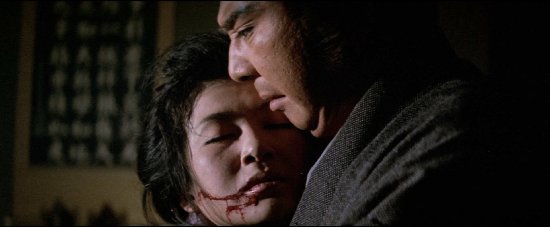
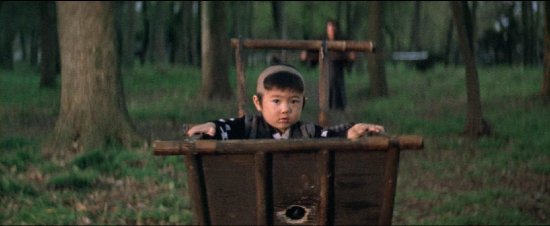
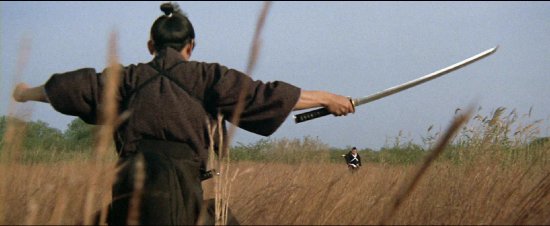
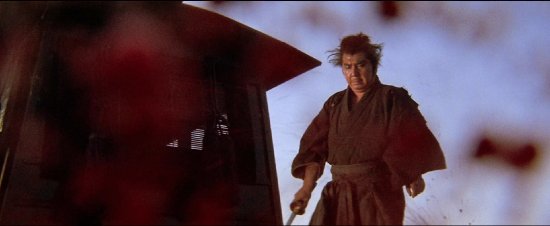
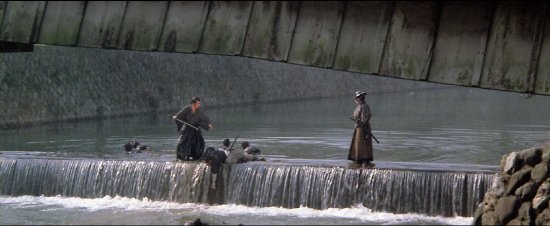
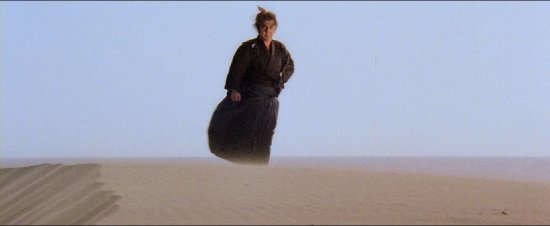
Your Opinions and Comments
Be the first to post a comment!